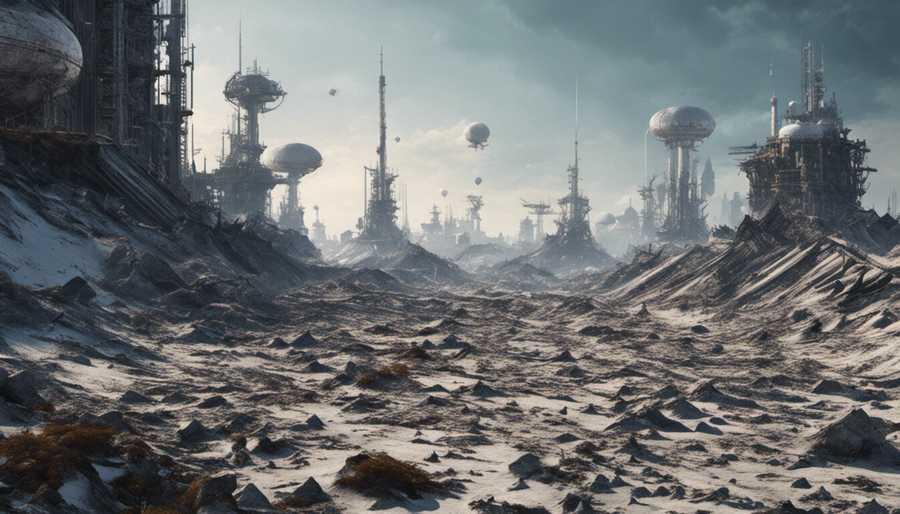Explore the World's Best Ideas
Join today and uncover 100+ curated journeys from 50+ topics. Unlock access to our mobile app with extensive features.
Space as a garbage dump
For many ages, space was pristine. In 1957, the Soviet Union launched Sputnik 1 into orbit, but when the batteries died, the aluminium satellite marked the end of an unspoiled era.
According to NASA, the space above Earth is now the world's largest garbage dump. It consists of 8,000 tons of human junk, or space debris, left by space agencies over the last six decades.
9
130 reads
Space debris
A brief inventory of space debris includes: a spatula, a glove, a mirror, a bag with astronaut tools, spent rocket stages, bolts, paint chips, defunct spacecraft, and around 3,000 dead satellites, orbiting Earth at speeds of roughly 18,000 m.p.h.
Most space junk is moving in low Earth orbit (LEO), within an altitude of about 100 to 1,200 miles. This is the same space where the world's 3,000 satellites operate that power telecommunications and GPS technologies.
8
104 reads
The impact of space debris
Some space rubble is natural micrometeoroids, like the fragment that struck the starboard payload bay radiator of the STS-115 flight in 2006.
Even tiny, untrackable micro-debris can become a problem. A paint fragment chipped off a spacecraft can move at nearly ten times the speed of a bullet and puncture an astronaut's suit, crack a window of a Space Station, and potentially destroy satellites.
8
82 reads
Space debris growing exponentially
A problem NASA scientist Donald J. Kessler outlined in 1978: As space becomes more packed with spacecraft and debris, collisions become more likely, creating more debris that could trigger a chain reaction of collisions. There is a possibility that near-Earth space can become a shrapnel field.
The first known case of damage happened in 1996 when a piece of European Ariane rocket struck the French spy satellite, Cerise. Many similar incidents have occurred since then.
6
63 reads
Satellite mega-contellations
China and companies like SpaceX, OneWeb, and Amazon aim to launch thousands of satellites into lower Earth orbits to reduce the time it takes for a signal to travel from the satellite to the user.
But some space experts are concerned that satellite mega-constellations could create more space debris. A 2017 study found that the deployment of satellite mega-constellations into low Earth orbit could increase catastrophic collisions by 50 percent.
7
71 reads
Space junk is everyone's problem
At this point, no international rules are governing the deployment and management of satellite mega-constellations.
The Inter-Agency Space Debris Coordination Committee comprises 13 of the world's space agencies. It aims to prevent on-orbit break-ups and to remove old spacecraft from the densely populated orbit regions. But, while space debris is everyone's problem, no entity is obligated to solve it.
6
64 reads
Cleaning up space debris
Cleaning up space will be complex and expensive and requires a coordinated, international effort. The most agreed on strategy among space organizations are to get rid of the big stuff first.
To clean up low Earth orbit, space organizations have proposed multiple solutions. The most promising is the ClearSpace-1 that will try to capture the junk with a robotic arm.
7
83 reads
IDEAS CURATED BY
Hashim I's ideas are part of this journey:
Learn more about scienceandnature with this collection
How to find purpose and meaning in life
How to cultivate gratitude
Techniques for managing negative thoughts
Related collections
Similar ideas
1 idea
What Is an Orbit?
nasa.gov
6 ideas
Six ways satellites make the world a better place
theconversation.com
7 ideas
Read & Learn
20x Faster
without
deepstash
with
deepstash
with
deepstash
Personalized microlearning
—
100+ Learning Journeys
—
Access to 200,000+ ideas
—
Access to the mobile app
—
Unlimited idea saving
—
—
Unlimited history
—
—
Unlimited listening to ideas
—
—
Downloading & offline access
—
—
Supercharge your mind with one idea per day
Enter your email and spend 1 minute every day to learn something new.
I agree to receive email updates

